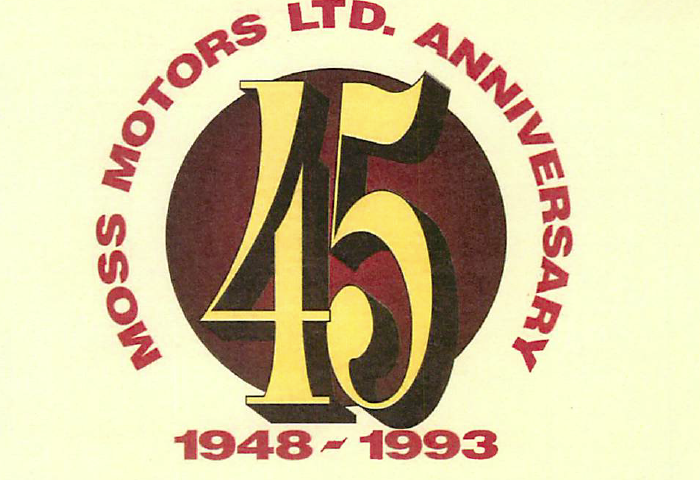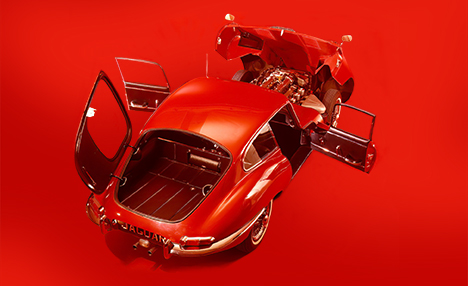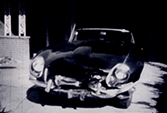Sometimes we take familiar things for granted, and it takes an outsider to bring things into perspective. Recently, a Lufthansa pilot visiting Santa Barbara, California, stepped into the Moss Motors showroom and asked the receptionist where the car show was being held. It seems he’d stopped at a gas station in the early morning and been passed by an MG Midget. Two MGBs, a red TR4A. a “cheesebox” Sprite, a Frogeye Sprite, an Austin-Healey BT7, a Mini, a TR6, a faded (but fast) MG TF, and a beautiful cream colored MG TC. Logic told him there must be a car show…but it was just the staff at Moss Motors driving to work. After a quick tour of the parking lot and the warehouse, he departed, but not before collecting a set of catalogs for friends in Germany, and the addresses of the six divisions of Moss Europe in England.
Moss Motors, Ltd. is the world’s largest supplier of spares for British sports cars, but we didn’t start out that way. As a matter of fact, we really didn’t start out as a parts business at all.
If Al Moss had bought a Ford instead of an MG TC back in 1948, things would have turned out differently. But Al was a young man living in Los Angeles, and the MG TC was irresistible. He had read about the road rallies being held back east, and organized one of the first held on the west coast in the summer of ’48. The rally (which coincidentally ended in Santa Barbara) introduced Al to a group of fellow enthusiasts. Aside from a passion for sports cars, they shared a common problem—parts and service. British sports cars were not welcome at the corner service station, and parts usually had to be special ordered.
Perhaps Al sensed an opportunity to combine his love for sports cars and a chance to make a living. He had done an apprenticeship in front end alignment, and he had some equipment. Figuring that a shop working on front ends and the occasional TC might work out, he rented a shop in Los Angeles and hung out the first MOSS MOTORS sign. The shop came to be a hang out for his sports car owning friends, and more than once the shop closed for an afternoon because the “group” wanted to drive somewhere interesting. Al helped this loose association become the “Foreign Car Group”, one of the first sports car clubs in California.
Moss Motors was by now doing a good deal more than just front end work, and Al also bought and sold a few cars. In 1949, Al sold a TC (for $1,100!) to a teenager named Howard Goldman. Two years later, Howard bought a second TC from Al, which he still has. They became friends, and this friendship was to have far-reaching implications.
Throughout the late 1950s, service work was the primary function of Moss Motors. However, since the TC had gone out of production in 1949, parts availability was becoming a problem. Al began to buy up lots of “obsolete” parts, and ventured into manufacturing. With a supply of parts to support his own service needs, Al became known as a source of parts for people doing their own work. With more and more people calling for parts, it seemed logical to put together a catalog, and the first MG T-series catalog appeared in 1962.
Howard Goldman had relocated 100 miles north of LA in Santa Barbara in the late fifties, and eventually talked Al into leaving the LA area in 1963. When Al moved Moss Motors to Goleta, just north of Santa Barbara, he dropped the service portion of the business, since the mail order parts business was expanding rapidly. By now Al was also busy making trips to England, looking for sources of the discontinued parts his customers needed.
The business continued to grow as Moss expanded by adding parts and catalogs for the MGA, the early MGB, Austin-Healey, and Jaguar XK 120-140-150. In 1977, we purchased 48 tons of “obsolete” inventory directly from Standard Triumph in England. The shipment filled four 40 foot containers, and it was the single largest factory buy-out of factory TR2-3-4 spares. In 1978, we published the world’s first comprehensive TR2-3-1 catalog, illustrating and listing virtually all the parts likely to be required, even if the parts were not available at press time. This made the catalog a valuable restoration aid and reference guide, and set the standard for future Moss catalogs.
By 1978, Moss Motors was supplying parts for British cars to customers all over the world. It was a big business that had become more work than fun for Al. When Howard Goldman offered to buy the business, Al took him up on the offer, and went into semi-retirement. Al’s still on the Board of Directors, and he spends much of his time restoring (and racing) his collection of vintage British sports cars.
During the late seventies we greatly expanded our Research and Development program. So many critical components had been discontinued that it was obvious that many cars would be scrapped, simply because they could not be repaired. We took on some major projects, marking the beginning of our large investment in tooling and precision machine work (the first company to do so, since the factory quit making original parts)! Now, British Motor Heritage works closely with Rover Cars PLC (formerly British Leyland) to continue the supply of factory original parts. Frequently, original tooling is transferred to small firms that will continue to make the parts in smaller production runs. These parts are then distributed through a small group of firms, each appointed as a “British Motor Heritage Approved Supplier and Manufacturer”. Moss Motors is a charter member of this organization, and the first in the US.
By 1980, it became clear that there was a need for restoration quality upholstery kits. We opened a complete upholstery manufacturing facility in Lompoc, a small town 45 miles north of Goleta. There, original cars were carefully stripped of their upholstery, which was then taken apart a seam at a time. From these original examples permanent patterns were made, and the shop went into production, making seats, panels, tonneau covers, and carpet sets.
In 1982, we opened our New Jersey warehouse; in 1987 we bought the MGA Centre in Darlington, England, which reproduces MGA parts, including the MGA body shell.
By 1988, Moss was one of the largest suppliers of vintage British sports car spares. The sales staff had grown from 4 to 18, with a total staff of over 100, and 12,000 square feet had been added to the main warehouse in Goleta. We had finally settled our New Jersey warehouse and showroom in a modem industrial park in Dover, New Jersey, which is directly linked to our national headquarters in Goleta. CA. That same year, Rover Cars PLC (formerly British leyland) decided to cease distributing factory parts through their facilities in New Jersey and California. They offered to sell off their entire multi-million dollar inventory of “obsolete” spares, and we bought the lot. It took months to process the transfer of inventory, which was shipped in eight 40-foot containers, each packed to the roof.
Our last major expansion took place in 1989, when we acquired the Classic British Sports Cars Group Ltd. Known as CBSS, this group includes some of the most respected names in the industry. Cox and Buckles, Ltd. was Britain’s foremost Triumph specialist. They had tremendous stocks of original spares, and, like Moss, had been reproducing discontinued items as well. Triumphtune, a company specializing in high performance and competition parts for Triumphs, was known all over the world for their “special tuning” parts. The Sprite, Midget, B, C, V8 Centre (Richmond, Bristol, Birmingham), Barry Stafford’s MGParts Ltd. (Manchester) and Naylor Brothers (Shipley) made up the rest of the group. Naylor Brothers was best known for their wide range of parts for the MG T-Series. This group, now known collectively as Moss Europe, Ltd., have made Moss Motors the world’s largest supplier of British sports car spares.
The British sports car market is unique, and although it’s changed over the years, the world-wide love for British sports cars seems undiminished. They have appreciated in value, most costing far more now than they did when new. Nonetheless, there are fewer of them each year as they are lost to accidents or simple deterioration to the point where a restoration is not feasible. The biggest problem is rust; a badly rusted body/frame can usually be repaired, but then cost more than the value of the car.
British Motor Heritage has provided a solution unique in the history of the automobile. BMH has produced new body shells for the MGB (both roadster and GT), the Midget, and most recently the TR6. With a new body shell with state-of-the-art rust-proofing, many more of these cars can be saved. So far, every shell produced was virtually pre-sold.
As to why there is such a demand for these cars, it’s difficult to say. Some are bought as investments, some are bought “because it’s the first car I ever owned”. And for the tinkerer, it’s a car without miles of wires, hoses and sophisticated electronics. There isn’t much that you can’t fix with a simple toolbox. Everybody has their own reason, but perhaps Howard Goldman said it best: “The beauty of the English car is that the car needs you.”











'Moss Motors Celebrates 45 Years of British Car Enthusiasm' has no comments
Be the first to comment this post!